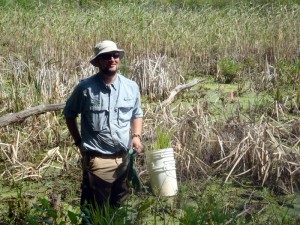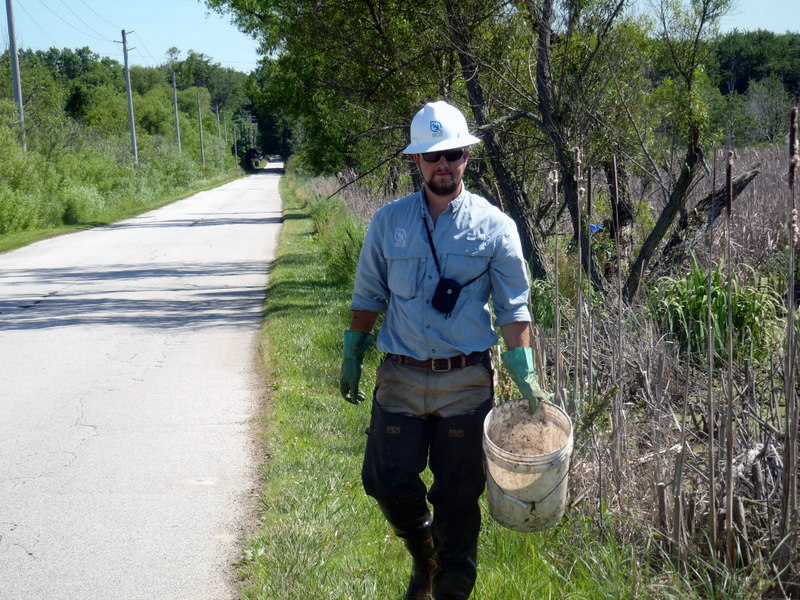For 2008 Eastern Mennonite University (EMU) alum Adam Brown, his working environment is not a day at the beach or a walk in the park, it’s a swamp.
Brown, a native plant corps project leader at the Indiana Dunes National Lakeshore, is charged with the task of working on the restoration of the Cowles Bog Wetland Complex, a project that brings back memories of his undergraduate work as an environmental science major.
“I’ve had flashbacks to my senior practicum at Big Meadows Swamp in Shenandoah National Park,” said Brown, an environmental science major at EMU. “Big Meadows Swamp and Cowles Bog look nothing alike, but the underlying principals and techniques used to minimize impact and restore these areas are very similar.”
Indiana Brown and the wetland of dunes
Since graduating, Brown has explored Mammoth Cave National Park in Kentucky; built trails at Point Reyes National Seashore in California; and spent a winter doing restoration with the Bureau of Land Management at Turtle Mountain Wilderness in the Mojave Desert.

His current focus is on the installation of native plant species in areas of the Cowles Bog Wetland, a section that has become infested with invasive plants.
Working in a “full circle restoration” process, Brown and his team harvested seed from plants in unblemished wetland areas to maintain genetic consistency. After non-native vegetation is removed, the harvested seed is used to propagate the area with the hope they will yield more seed the following year.
“Currently, we are working to remove species from wetland areas that were left as remnants of human influence in the mid-1900s,” Brown said. “Today these species negatively impact hydrology and their removal will allow the wetland to function more like it did before human influence.”
Building bridges at EMU
Brown points to his practicum under Jim Yoder, professor of biology, and courses with Roman Miller, professor of biology and Terry Jantzi, associate professor of peacebuilding and development, for helping to develop his theoretical and practical skill base and opening doors to his current job.
“My senior practicum provided me with a great background in wetland ecology and the unique concerns that confront anyone attempting to restore sensitive wetland areas,” said Brown. “I am a kinesthetic learner, and my courses with Roman and Terry, in addition to the experience of working with the the U.S. National Park Service at Shenandoah, tied together all the theoretical models we learned about.”
Brown also believes his practicum at Big Meadows Swamp provided him with an internal “swamp GPS,” adding, “If you can get out of [Big Meadows] without getting disoriented you can pretty much find your way around anywhere.”
